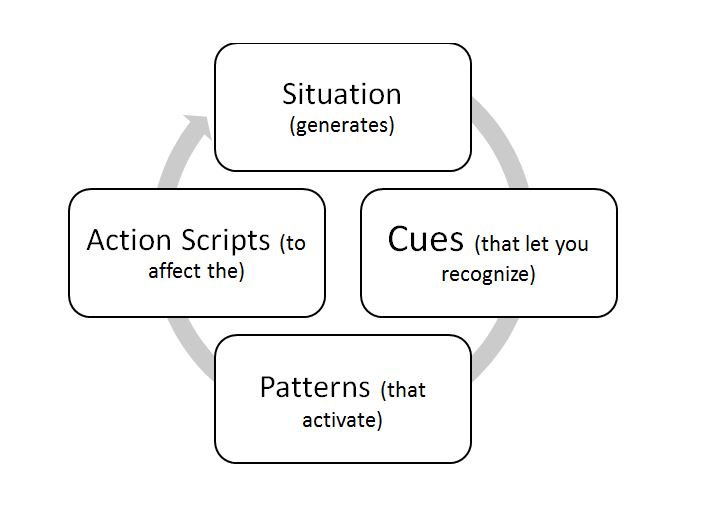One of the most difficult things to teach people is intuition. Even when you say, “How to become more intuitive?” it seems to have this mystical sound to it. In Gary Klein’s book, The Power of Intuition: How to Use Your Gut Feelings to Make Better Decisions at Work, he discusses the ability to recognize patterns as an integral part of intuition. He says,
Once we recognize a pattern; we gain a sense of the situation. We know what cues are going to be important and need to be monitored. We know what types of goals we should be able to be accomplish. We have a sense of what to expect next. And the patterns include routines for responding — action scripts. If we see a situation as typical then we can recognize the typical ways to react. That’s how we have hunches about what is really going on, and what we should do about it.
Intuition is the way we translate our experiences into judgments and decisions. It’s the ability to make decisions by using patterns to recognize what’s going on in a situation and to recognize the typical action script with which to react. Once experienced intuitive decision makers see the pattern, any decision they have to make is obvious.
Klein shows a similar figure to outline how the action script affects the situation.
As Klein points out, it is through action and developing a variety of action scripts to pull from the more intuitive, you will become. I liken it very much to a PDCA cycle in Lean. We form a hypothesis (Plan), carry out an action (Do), study (check) what we did, and make our adjustments (act). If we do this often and in small increments we could make the case that we would develop more intuitive skills.
What Klein later discussed is that the action script actually has a deeper component which we use to assess our actions through a mental simulation or painting a scenario of a process from an existing mental model. In simpler terms, we develop from past experiences a sense of what to do. I relate this process to another Lean term, catch-ball. In this version of catch-ball, it is not done with others but internally within our own mind. We envision a process, tying it to current patterns and react accordingly.
I have always thought of Lean, first and foremost, as being a knowledge building tool. Or, do I only have a hammer and everything is looking like a nail?
Become a Learning Organization through Relentless Reflection
Special Marketing with Lean Book and Program offers on Facebook

